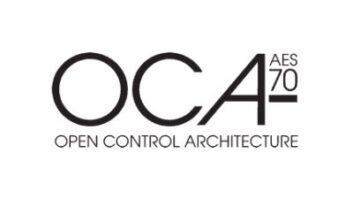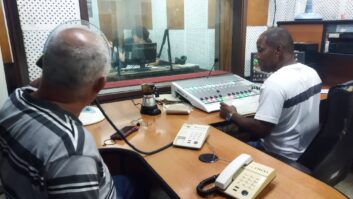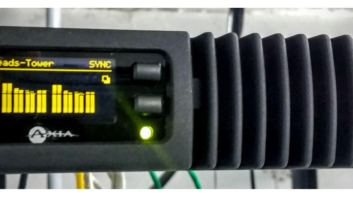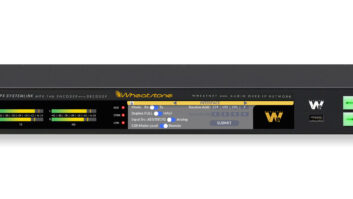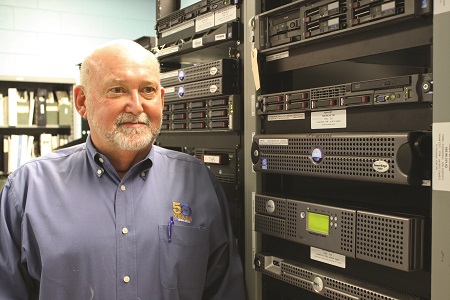
We often hear that radio broadcast engineers must expand their IT literacy.
I know of no person who has helped others make that happen in recent years more than Wayne M. Pecena, recipient of the 2014 Radio World Excellence in Engineering Award.
He is director of engineering at Educational Broadcast Services in the Office of Information Technology at Texas A&M University. It operates KAMU(TV) and KAMU(FM); but if you know Wayne’s name, it’s probably through his diligent efforts to educate engineering colleagues about the basics and nuances of networking technology.
TRAINING
Pecena was already active locally in the Society of Broadcast Engineers, but his career took a turn a few years back when the organizer of an SBE Ennes Workshop in Dallas called in a panic after a presenter dropped out. The chapter chairman asked if Pecena could help find someone to talk for three hours about IP networking; he volunteered.
In the audience that day were Fred Baumgartner, who has long been active in SBE education efforts, and Kimberly Kissel, then the society’s education director.
“I guess they liked what I did,” Pecena told me.
Over the subsequent several years, Pecena has created or led more than 30 educational events about networking technology and IPv6 for broadcasters. He’s given short online tutorials and webinars. He has led in-person presentations that last up to a day and a half. When I spoke to him, he had just completed one for the SBE chapter in Miami.
This is all part of a larger expanded effort by SBE to create educational resources for its members. He now serves on the society’s national board and executive committee, and he chairs its education committee.
BACKGROUND
Wayne Pecena was born in Paris, Texas, in “Tornado Alley,” near Oklahoma on the West Gulf Coastal Plain. He grew up listening to the big AM signals of stations like KLIF in nearby Dallas and WLS from distant Chicago. His interest was piqued in high school when he worked in a local radio/TV repair shop and became a ham radio operator.
“My ‘Elmer’ was David Ward, a gentleman whose family owned a broadcast station in northeast Texas,” he told me. Ward’s father Winston owned KIMP as well as a station in Idadel, Okla.
“I didn’t per se work there, but I hung around there a lot. It was pretty fascinating. One of the treats was going to Oklahoma to do the annual proofs. Also doing Marti remotes. That was really fun stuff. I still enjoy going on remotes.”
After high school, he moved to College Station in 1971, a drive of some 280 miles to the south, to attend Texas A&M. He wasn’t planning to stay there long-term, but the choice of school turned out to be his choice of career.
In 1973, he joined the university’s public broadcast station KAMU(TV) as a student worker; he eventually became full-time and obtained his FCC First Phone. When he graduated with a business degree, the job market was soft, so he decided to keep the university job and work on a Master of Science in industrial technology.
Over the years, and with mentoring from people like local engineer Casey Jones, he would rise to become the station’s chief engineer, then director of engineering.
DISTANCE LEARNING
His first major facility project was to put the university’s FM station on the air starting in the late 1970s.
In later years KAMU went through the digital TV transition. It would eventually add HDTV and HD Radio; indeed KAMU was first in its market to air digital TV or digital radio.
But his interest in networking grew through building a distance learning system.
In the 1980s, Texas A&M (the former Texas Agricultural and Mechanical College) developed an interest in distance learning, spurred by the availability of grant money from the Department of Agriculture. Other land-grant institutions were doing the same.
In such a system, a campus TV station would distribute specialized educational video content via a satellite uplink; students could view the content at remote sites equipped with receivers, giving feedback and sending questions by phone or fax.
“That put us into the distance learning business fairly early on,” Pecena said.
The network evolved as video conferencing began to mature; terrestrial data networks evolved into ATM networks, which evolved into an IP environment. Because he was hands-on, creating these networks, “I had to learn this stuff if I was going to keep doing what I was doing.”
A core group of three technical managers led the effort. Pecena was one; another came from a telecom background; a third handled administrative and financial matters.
The network that began as a distance learning system today is essentially the intranet of the Texas A&M system, with 12 remote campuses and approximately 160 sites, supported by a large multi-gigabit IP backbone. The system was called the Integrated Services Network; it later became the Trans Texas Video Conferencing Network. Now it’s TTVN. But what had begun as a distance learning/video conferencing network has grown into a large IP network.
“We do videoconferencing, H.323 style stuff, broadcast-grade video between different campuses. We feed programming. There are several radio stations within the A&M system; we feed audio around that backbone.” Each campus has its own IT department, and Pecena’s operation acts as something like an internal ISP.
Today he oversees a staff of 14 engineering and operations people, including a radio/TV chief engineer position, currently vacant. The operation also employs student workers.
Professionally, the educational environment tends to be more stable than commercial broadcasting. Still, “The industry has changed for everyone. If I look around town, the way things changed from 20 years to now, there are more radio station licensees on the air in this area, but at the same time there are fewer entities operating those stations due to consolidation.”
Are students today interested in radio, and in radio engineering? “There are a lot of bright, sharp students out there,” said Pecena, who isn’t teaching but works around students frequently. “We don’t seem to have the technical-oriented students that we did at one point in time; but from the production standpoint, radio/TV is still showbiz. That part hasn’t really changed.
“You have the few who rise to the top, that have an interest in the tech as well as the art and skills of the production side — whether it’s radio or TV or both.” Still, gone are the days when everyone on the engineering staff was a ham radio operator.
FUTURE ENGINEERS
He also senses a shift in the makeup of the broadcast engineering community, which has implications for the SBE. Much of the society’s focus has been to educate traditional broadcast engineers, who typically have backgrounds in RF, audio and video, about IT and IP networking.
“If you look forward, I think you’ll see the next generation of broadcast engineers coming from a traditional IT background.” He sees this as an opportunity for the society to educate that generation in certain basics that seasoned broadcast engineers may take for granted, having learned about them from mentors or on-the-job experience.
Yet if the new generation is going to come from IT ranks, broadcast managers may have a wakeup call coming about the cost. “Salaries for entry-level IT people in some cases exceed the salaries of seasoned broadcast engineers,” he notes.
FUTURE INFRASTRUCTURE
I asked Wayne where he sees our industry going next.
“I think the next tech shift is going to be the radio station in the cloud, where the technical infrastructure we take for granted is in the cloud, and connected to that cloud is the terrestrial transmitter. … I don’t have a good crystal ball; but I can see a time when what we think of as the radio station is nothing more than a sales office, and audio production is done on something as simple as an iPad or some kind of computer device. You need that local microphone; but that infrastructure, that rack room we all have? I can see that not existing anymore.”
He expects corporate broadcast operators to continue to push for regionalization and centralization, “even to the point of a service-type provider offering that radio station in the cloud.”
PERSONAL LEARNING
Preparing this article, I touched base with Fred Baumgartner of SBE, himself a leader in industry training.
“Lifelong educators, people who honed their skills teaching in the classroom and focused on broadcast engineering — the Jim Wullimans, the Jay Adricks, the John Battisons — are extraordinarily rare,” Baumgartner told me.
Baumgartner, an Ennes trustee and broadcast engineer for KMGH(TV) Denver, recalls sitting “mesmerized” by Pecena’s tutorial on networking for broadcast engineers. “Each year, Wayne has stepped up the level and intensity of the educational effort. All I know is that I don’t ever remember learning more, in any manner, place or time, than when Wayne was in front of the house or on a webinar. Moving education for broadcast engineering forward has been a long road with many contributors. Wayne’s contributions are exceptional … and we are grateful.”
Wayne Pecena still lives in College Station with his wife “Slyck,” a former broadcaster, as well as “a four-legged Beagle daughter named Jill who lets me live in the house.” In addition to his day job and SBE work, he is the vice-chair of the Public Broadcasting Service Engineering Technology Advisory Committee.
While he has more than four decades of broadcast, telecom and network engineering experience — and is a past recipient of the SBE Educator of the Year Award — Pecena puts his belief about education into ongoing practice. He holds five certifications from the society, including Certified Professional Broadcast Engineer and, yes, Certified Broadcast Network Engineer; he also has completed specialist certifications in 8-VSB, AM Directional Antennas and Digital Radio Broadcast.
And he continues to soak up what’s around him. “I’m out doing classes at different levels, but at the same time I’m still learning too. Each class I do is an opportunity to reinforce how much I don’t know. I hope some of the people who endure me for an hour or more get something in return. I know that I do.
“My first love is broadcasting; but as the broadcast world moves into the IT world, I seem to have ended up at the right place at the right time.”
If you appreciate Wayne’s efforts, tell him at the spring NAB Show; he’ll give the opening tutorial at the SBE Ennes Workshop on Saturday. Or write to me at [email protected].
Honor Roll
Recipients of the Radio World Excellence in Engineering Award represent the highest ideals of the U.S. radio broadcast engineering profession and reflect those ideals through contributions to the industry.
2014 Wayne Pecena
2013 Marty Garrison
2012 Paul Brenner
2011 Barry Thomas
2010 Milford Smith
2009 Gary Kline
2008 Jeff Littlejohn
2007 Clay Freinwald
2006 John Lyons
2005 Mike Starling
2004 Andy Andresen





